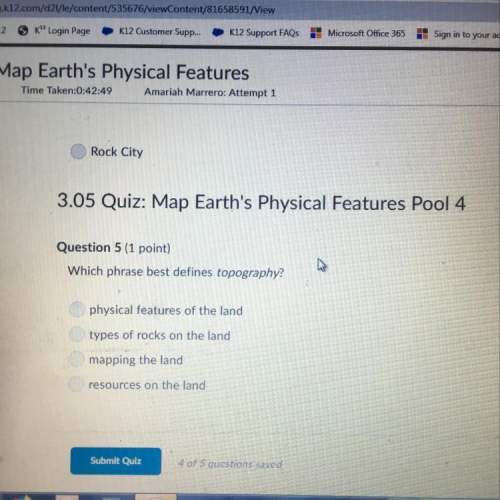
A. predict the products of each reaction if needed. If there is a diatomic element by itself, it will have a subscript of 2 (Br2, I2, N2, Cl2, H2, O2, F2)
b. balance each reaction
c. classify the type
_Na+ _Cl2 =
Type:
_H2O2= _H2O + _O2
Type:
_ Sn(s) + _ HCl(aq) =
Type:
_Cl2 + _NaI = _ NaCl + I2
Type:

Answers: 3


Another question on Chemistry


Chemistry, 22.06.2019 07:50
Many reactions take place in aqueous solution. when potential reactants are mixed, a reaction will occur if there is some driving force that favors the formation of products. it is often convenient to categorize reactions in terms of these driving forces: precipitate formation, in which an insoluble solid is formed, weak electrolyte formation, as in a neutralization reaction involving water, or transfer of electrons, as in a redox reaction. these reactions can be represented by full molecular equations, which contain all species in the reaction mixture, or by net ionic equations, which show only the species that actually undergo a change. the latter does not contain the spectator ions, which do not undergo a net change or do not take part in the reaction. part a when the following two solutions are mixed: k2co3(aq)+fe(no3)3(aq) the mixture contains the ions listed below. sort these species into spectator ions and ions that react. drag the appropriate items to their respective bins. view available hint(s) spectator ions ions that react part b what is the correct net ionic equation, including all coefficients, charges, and phases, for the following set of reactants? assume that the contribution of protons from h2so4 is near 100 %.ba(oh)2(aq)+h2so4(aq)→ express your answer as a chemical equation. view available hint(s) nothing provide feedback
Answers: 3

Chemistry, 22.06.2019 10:30
Acompound has a molar mass of 92.02 grams/mole, and its percent composition is 30.4% nitrogen (n) and 69.6% oxygen (o). what is its molecular formula? a. n2o4 b. no2 c. n2o d. n4o2
Answers: 1

Chemistry, 22.06.2019 12:20
Consider the reaction of a(g) + b(g) + c(g) => d(g) for which the following data were obtained: experiment initial [a], mol/l initial [b], mol/l initial [c], mol/l initial rate, mol/l.s 1 0.0500 0.0500 0.0100 6.25 x 10^-3 2 0.100 0.0500 0.0100 2.50 x 10^-2 3 0.100 0.100 0.0100 1.00 x 10^-1 4 0.0500 0.0500 0.0200 6.25 x 10^-3 what is the rate law for the reaction?
Answers: 3
You know the right answer?
A. predict the products of each reaction if needed. If there is a diatomic element by itself, it wil...
Questions

English, 16.07.2019 01:00




English, 16.07.2019 01:00

Chemistry, 16.07.2019 01:00




Health, 16.07.2019 01:00

Mathematics, 16.07.2019 01:00

Mathematics, 16.07.2019 01:00


Mathematics, 16.07.2019 01:00

Biology, 16.07.2019 01:00


Arts, 16.07.2019 01:00







